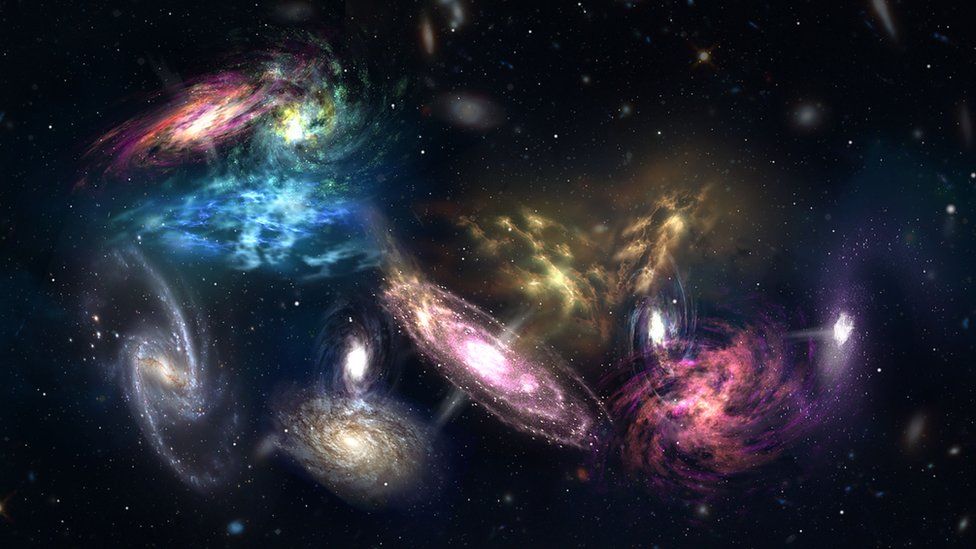|
Composition of Universe – The Hindu Perspective
Modern Science discovered that the universe is constituted of space, time, seen matter (stars, galaxies, planets, nebulas and interstellar gas), unseen matter (dark matter), life and energy. Ordinary matter accounts for only 4.9% of the contents of the Universe. Dark matter accounts for 26.8% of the cosmic contents. Dark energy, the energy of empty space, is causing the expansion of the universe to accelerate and accounts for the remaining 68.3% of the contents. Hence, the modern science identified six basic constituents’ viz. space, time, visible matter, dark matter, life and energy. It is worth mentioning that ancient Hindu philosophers researched, much before the modern science discovered constitution of universe, identified six basic substances viz. Universal Consciousness or Supreme Being (Ishvara), Souls (Jivas), Non-material stuff (Aprakrta or Shuddhsattva), matter (Prakriti), outward consciousness (Dharmabhuta-Jnana) and Time (Kala). All the substances are divided into two main classes’ viz. insentient, inanimate or lifeless (Jada) and Non-animate, animate or living (Ajada). Living category of substances are Brahman (Ishvara), Jiva (Atman), Suddhsattva and Dharambhuta-Jnana. Non-living category of substances are Prakriti and Time. During the medieval period, Ramanujacharya and Nimbarakacharya, the exponents of Hindu Philosophies of Vashishtadvaita and Dvaitadvaita respectively, explained the constituents of the Universe. Ramanujacharya included above six substances among the constituents of universe but Nimabarkacharya did not mention Dharmabhuta-Jnana. The characteristics of the substances as under:
He possesses six glorious powers viz. Sovereignty, Omnipotence, Omniscience, Immateriality, Independence and endless manifestation. In Vishnu Purana, these powers are described as under:
The manifestation of Prakriti from the state of latency (Parlaya) into Patency (Srishti) is in stages and in that sense may be called as evolution. These stages are as under:
Reference:
0 Comments
Leave a Reply. |
Archives
March 2024
Categories
|

 RSS Feed
RSS Feed